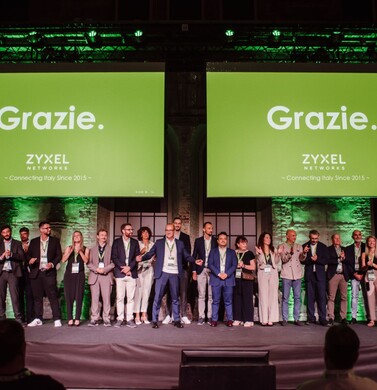
Sun, sea, sand and (network) strain – it must have been summer!
Sun, sea, sand and (network) strain – it must have been summer!
The summer holiday season has drawn to a close but not before leaving plenty for the hospitality sector to ponder. Global economic growth and the hot weather supported increased leisure and travel spending this summer, with hotel occupancy rates across Europe contributing to a bumper year as holiday makers looked to make the most of their vacation time.
It is important for hoteliers to reflect on the summer months in order to prepare themselves for the next year’s surge of visitors. But it’s not just the rooms and restaurants that need to be ready and in peak condition to cope with the influx of guests during these busy seasons. The underlying IT networks, which help the hotel industry deliver key customer services and support staff in their day-to-day roles, will also feel the heat from high guest turnover and increasing visitor numbers.
More customers means more demand for bandwidth – from streaming media in-room and in communal areas, to using WiFi to plan days out and keep in touch with family and friends via social channels and video calls Research shows that during the 2017 summer months 45.6 million more nights were spent in hotels and similar accommodation within the European Union than in 2016 , this year’s figures – and the knock-on impact on hotels’ WiFi provision - are set to be even higher.
Guests stay switched on
Despite getting away from it all and taking a break from the norm, downing devices is not something that many of us do during our holiday. In fact, the desire to keep in touch and up-to-date with social media, check emails and stream videos and movies is often stronger than ever. Online gaming is also a big draw, especially with younger members of the family. There won’t be many teenagers who can go a few days, let alone a fortnight without playing Fortnite. Hotels are wising up to this, with many having their own games consoles in communal areas or even in the rooms to keep the children happy!
But all of this comes at a cost for the hotel. Hospitality facilities need a robust underlying network infrastructure as well as a consistent and trustworthy WiFi to support it, and keep guests connected and happy. With hotels across the globe differing in the way they manage the cost of WiFi provision and how they charge guests for usage, one thing must be commonplace. The reliability of the service on offer needs to remain consistent, even at peak times.
For holidaymakers, reliable WiFi within the hotel complex is crucial, and is often the main way that they can avoid unexpected data roaming charges if travelling outside the EU and continue to use their devices to stay connected as they would at home. You only need to read the headlines about holidaymakers being stung with high roaming charges to see just how tied to our devices we are. Guests expect to be able to connect and will be quick to complain if there are any breaks in WiFi coverage or the signal is patchy.
Staff usage surges
But it’s not only the increase in room occupancy which can put a strain on the IT network. Increased customer levels also mean employing more seasonal staff, to cope with demand and ensure levels of customer service remain high.
This too has an impact on the IT network. More employees will require access to company systems and different levels of permissions to carry out their roles. They will also need to connect their own devices to the network. For example, the connected restaurant is making service smoother, with handheld devices meaning that customer orders can go straight to the kitchen, for a streamlined approach. More front of house staff means more traffic on the network. If the network isn’t up to it, this could be detrimental rather than beneficial to smooth running operations.
Security needs to be a priority
Additional connections from guests and new users on the network won’t just impact bandwidth and usability but bring more points of vulnerability. Securing the network and ensuring it is protected from threats including malware and leakage of company or personal information needs to be a high priority. The impact of the GDPR which came into force in May this year has also put an onus on hotels to tighten up the security of personal data they process and store.
Any information breach as a result of lax WiFi security could be hugely detrimental for a hotelier not only in terms of reputation and loss of customer trust and business but can result in huge monetary fines under the GDPR.
Top tips for dealing with seasonal strain
Seasonal demand can put pressure on hotels’ IT provisioning. If the underlying infrastructure and measures are not in place to take the impact, then many establishments could find their network unable to cope at the busiest times of year.
To make sure this doesn’t happen, there are four key considerations for hoteliers across the globe to take into account, which will help their networks manage the peaks and troughs of seasonal operations – and beyond.
- Visibility and control. Do you know where and when bandwidth demands are at their highest within the hotel complex? Hotels operate 24/7 and so maintaining a network at all times of day and night is imperative. Understanding this via a simple cloud management platform will mean you can control and boost access in the areas where it’s needed most to balance out supply and demand, without the expensive overheads of deploying large solution to cater to every corner of the hotel. By deploying cloud management platform, smaller, more boutique, hotels can identify high-demand areas and fulfil demand with lower cost entry point products that deliver enterprise standard WiFi.
- Segment the network. Having independent networks for guests, staff and hotel operations will add an extra layer of security and reduce vulnerabilities associated with multiple connections on the network. Bolstering protection for the hotel and its guests in this way, will stop you from getting burnt by unexpected attacks and protect sensitive data in the long run by understanding who is on the network and how they’re using it.
- Scalability and flexibility. Can your current solution handle everything that is thrown at it and give you the visibility you need to manage the network effectively? Is it flexible enough to cope with added strain? Having a solution that can be easily scaled up and down will make the hotel’s life a whole lot easier when demand starts to peak.
- Future-proof now. Rather than adding and upgrading when things start to fall over, planning for future demand will stand you in good stead to not only cope with peaks and troughs now, but to plan for the more demanding applications and expectations of tomorrow. If hotel owners adopt a cloud managed network, they can manage their network no matter where they are in a few clicks, with no need for contracts or licenses, and achieve a truly flexible and future-proofed network all-year round.




